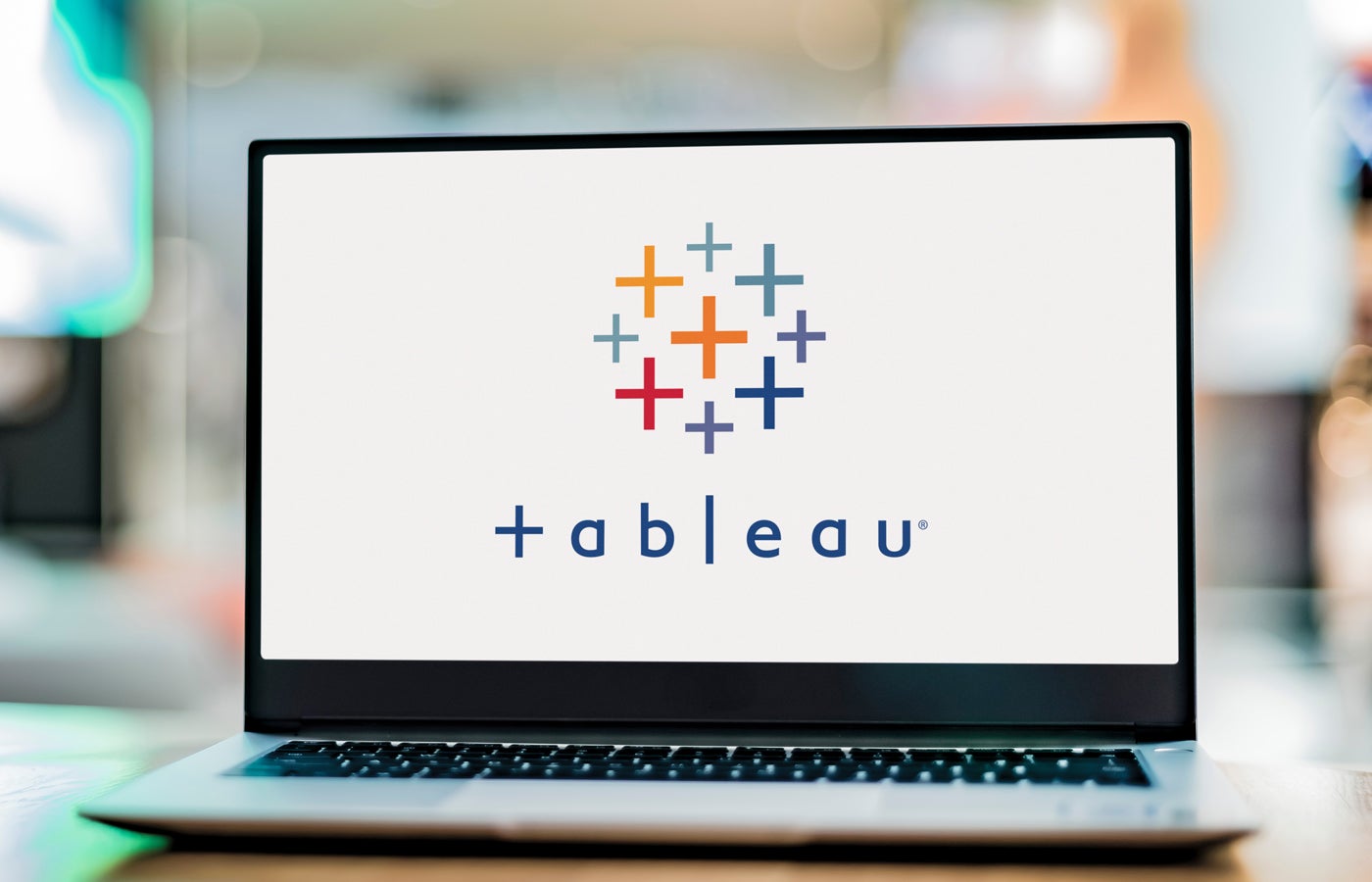
Tableau is a flexible BI and analytics tool that helps users in all industries with reporting and decision-making processes. Although, it may not be the best for individuals or startups with much smaller analytics needs.
Tableau is a popular business intelligence and data analytics tool renowned for transforming complex data into actionable insights. Used by a diverse range of industries, from healthcare to finance, Tableau empowers organizations to make data-driven decisions. Its intuitive interface and powerful visualization capabilities enable users to create compelling data stories, making it a preferred choice for professionals seeking to leverage data effectively.
Whether you are a seasoned data analyst or a business leader looking to harness the power of data, Tableau offers a suite of tools to meet a variety of analytical needs.
Jump to:
What is Tableau used for?
Tableau is widely used for reporting, data analysis and decision-making processes across departments in an organization. Its applications range from tracking key performance indicators to conducting in-depth market research and forecasting future trends.
As a flexible data visualization and business intelligence tool, Tableau allows users to connect to a variety of data sources — from simple spreadsheets to complex databases — and transform this data into interactive, visual dashboards and reports. With these visualizations, users can identify trends, patterns and insights that might not be obvious in raw data.
How do you use Tableau?
Using Tableau begins with connecting to your data source. Tableau is compatible with numerous data formats and sources, including Excel, cloud-based data and SQL databases. Once connected, you can use its drag-and-drop interface to create visualizations. You can choose from a variety of chart types, apply filters and use drill-down features to explore data in-depth.
SEE: Here’s how to concatenate strings and numbers in Tableau.
Tableau also allows users to create dashboards that combine multiple visualizations, which provides a comprehensive view of the data. Sharing insights is straightforward with Tableau’s options to publish dashboards on Tableau Server or Tableau Online, enabling collaborative decision-making.
Is it easy to learn Tableau?
The ease of learning Tableau largely depends on one’s background and experience with data analysis tools. For users who are familiar with data concepts and visualization principles, it’s relatively straightforward to start creating basic visualizations. However, mastering its more advanced features, like complex calculations and data modeling, may require additional time and practice.
Tableau offers a wealth of learning resources, including online tutorials, forums and training sessions, which can significantly ease the learning process. The active Tableau community also provides a supportive environment for beginners to learn and share knowledge.
Do I need to learn Excel or SQL before Tableau?
While prior knowledge of Excel or SQL is not a prerequisite for using Tableau, being familiar with these tools can enhance a user’s Tableau experience. Excel skills help users understand data organization and basic analysis, which are fundamental in Tableau. As for SQL, its knowledge is advantageous when working with large databases or performing complex data queries within Tableau.
SEE: Discover how to create or use a Top N filter in Tableau.
Still, Tableau is designed to be accessible to non-technical users, including those without a background in these programs, by providing various ways to manipulate and analyze data without needing advanced skills in Excel or SQL.
Key features of Tableau
While Tableau’s most prominent feature is its data visualization capabilities, its intuitive design and data processing and analytics capabilities make it a top choice for teams with varying levels of data experience. Some of these features include:
- Data visualization: Users can create a wide array of interactive and visually appealing charts, graphs and maps to transform complex datasets into understandable and actionable insights, making it easier to identify trends and outliers.
- Drag-and-drop interface: Tableau’s intuitive drag-and-drop interface makes it accessible for users with varying levels of technical expertise to create complex visualizations.
- Advanced analytics: Advanced analytics features, including predictive modeling and trend analysis, help users forecast future trends and make data-driven decisions, even without a deep background in data science.
- Data blending: Tableau’s ability to merge data from multiple sources into a single dataset for analysis is particularly useful when dealing with related data that is stored in different systems.
- Real-time data processing: Tableau’s real-time data processing capabilities allow users to analyze data as it’s being updated, which is ideal for teams that need up-to-the-minute data analysis for timely decision-making.
What is Tableau good for?
Tableau excels in transforming raw data into meaningful visualizations, making it an excellent tool for data-driven decision-making. It’s particularly effective for businesses that need to analyze and interpret large datasets to unearth trends and patterns.
In addition, Tableau is great for creating comprehensive reports and dashboards, which paint a holistic picture of business performance. And Tableau’s real-time data processing capabilities mean that it’s great for scenarios like monitoring live financial markets or tracking operational metrics in real time that need immediate data analysis.
What is Tableau not good for?
For all its capabilities, Tableau has certain limitations. For one, it’s not primarily designed for detailed statistical analysis or advanced predictive modeling, which requires specialized statistical software. Tableau might need to be supplemented with other tools to achieve deep data manipulation.
Additionally, while Tableau can handle large datasets, extremely high volumes of data might require additional data preparation tools to optimize performance. And while its pricing is more affordable compared to competitors, Tableau may not be the most cost-effective solution for very small businesses or individual users who have limited data analysis needs, as its full suite of features might be underutilized in such scenarios.
Top Tableau integrations
Tableau’s wide variety of integrations can be categorized according to cloud services, customer relationship management systems, big data tools, business applications, spreadsheet tools and dashboard application integrations. Focusing on the dashboard applications, some of the integrations you can expect to find on Tableau dashboards include:
- WriteBackExtreme allows users to add data directly within Tableau dashboards, with features for collaboration, data helper, data correction and an administration console.
- Write-Back Form Builder provides the functionality to create forms within Tableau for data entry. It allows users to input and update data directly from the dashboard, making it easier to manage and update datasets without leaving the Tableau environment.
- Pixel Perfect by USEReady is an extension for creating print-ready, well-formatted reports directly from Tableau dashboards, enhancing the precision and aesthetics of printed Tableau visualizations.
- Synchronized Refresh by phData synchronizes dashboard refreshes for all users, enabling real-time collaboration on the same data. It’s particularly useful for teams working simultaneously on time-sensitive data.
- Kinetica Geospatial Analytics by Kinetica allows users to analyze billions of data points on a map, leveraging Kinetica’s database server-side rendering. It’s great for handling large-scale geospatial datasets.
Tableau’s place in the BI and analytics software market
Tableau has established itself as a significant player in the business intelligence and analytics software market. With a market share of 15.09% in the business intelligence category, Tableau ranks highly among hundreds of competitors in this sector.
The acquisition of Tableau by Salesforce in 2019 for $15.7 billion marked a pivotal moment, further solidifying Tableau’s position in the market. This merger into the Salesforce ecosystem has enhanced Tableau’s capabilities, making it an even more powerful tool in the BI and analytics landscape. Tableau’s reputation as a top BI and analytics tool is well-earned, evidenced by its consistent ranking as a leader in Gartner’s Magic Quadrant industry analysis every year since 2012.
Tableau’s main competitors
- Google Looker is a BI and analytics platform that uses its unique modeling language, LookML, to enable highly flexible and powerful data modeling.
- Alteryx offers a data analytics platform that is both code-free and code-friendly with automated workflows and spatial and predictive analytics capabilities.
- Domo provides cloud-based data integration and real-time dashboard creation capabilities alongside a user-friendly interface that enables the easy building of data visualizations and interactive dashboards.
- Databox is known for its customizable dashboards, real-time data tracking and KPI visualization as well as collaboration tools, alerts and notifications that are especially useful for marketing and sales analytics.
Source of Article



